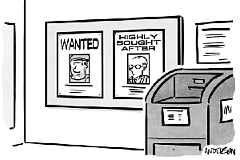 I am in the business of change. Every one of my clients chooses to engage with me because they want their business to improve. They want to get better, and getting better invariably involves change. Change is constant in all aspects of life, and we can choose to fight it, or embrace and even direct it. I’m an advocate for the latter. Embrace and adapt to the changes that are happening to you, and work to influence and direct the changes you want to see happen. The one scenario that gives me pause (or has caused me to rethink things in my own situations) is when changes are made simply for change’s sake.
I am in the business of change. Every one of my clients chooses to engage with me because they want their business to improve. They want to get better, and getting better invariably involves change. Change is constant in all aspects of life, and we can choose to fight it, or embrace and even direct it. I’m an advocate for the latter. Embrace and adapt to the changes that are happening to you, and work to influence and direct the changes you want to see happen. The one scenario that gives me pause (or has caused me to rethink things in my own situations) is when changes are made simply for change’s sake.
I recently had a conversation with a client who confessed to feeling some “restlessness” in his business. He felt a need for change but was not sure why, and did not know what change he needed or how to implement it—it simply felt like it was time for a change. He was approximately 18 months into taking over from his father (who was still involved with clients, but not the day-to-day operations), and while things were going in the right direction, he felt that more needed to happen.
Not long after, he was interviewing a woman for an administrative position within the company. As the interview went on, he decided to change things up and modified the role mid-interview. The position changed from administrative to sales (again, this felt like the right change at the time). They brought her back for a second interview, and as the process went on and the questions became more specific, he realized that the woman was not the right fit for the job and that the position itself was unnecessary. The business could not support another sales role. He realized he was making a change simply to satisfy that restless feeling. There was no meaning or direction behind it.
Change is necessary for growth and improvement, but it needs to be the right change for the right reasons. Business owners and leaders should always keep a sharp eye out for opportunities for meaningful, positive change. Be proactive by practicing Zero-Based Thinking; ask the question “Knowing what I know now, would I do this again if I were to start over?” Ask those KWINK questions to evaluate processes, systems, plans, products, marketing tactics, customers, even people, and be prepared to make changes when the answer to the question is “no.”
That being said, planning and vetting every single move in a business is not always necessary. Don’t be afraid to make a small change when it just feels like the business needs a boost; make a small move, test and measure, and see what works. Then carefully plan and execute the big changes. Err on the side of change to avoid stagnation, and keep your business moving forward, adapting, and improving.














